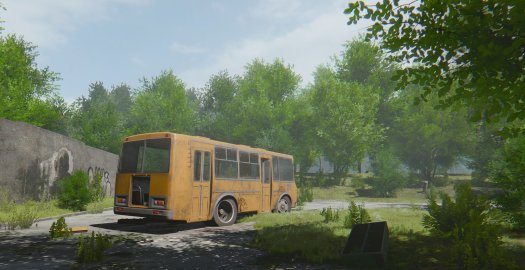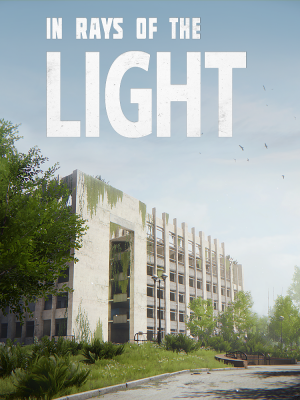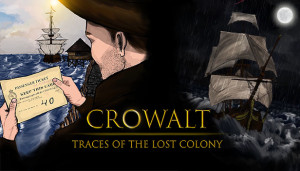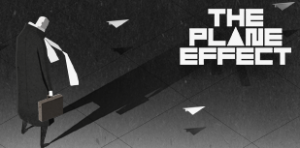Review for In Rays of the Light

When first starting up In Rays of the Light, it quickly becomes apparent that indie developer Sergey Noskov looked to real-life incidents like the nuclear catastrophe at Chernobyl for inspiration - even if the game later reveals the story takes place in the near future instead of the not-too-distant past. But the vibe of being the only living being amidst the crumbling ruins left standing after an apocalyptic blast is, for all intents and purposes, the same. It’s a setting that conveys an inherent creepiness factor, even if the game that follows doesn’t particularly go out of its way to capitalize on this. It’s atmospheric if shallow, an hour or two focused less on exploration and more on uneventful navigation. It has all the trappings of a creepily good time but pretty much plays its full hand within the first couple of minutes.
The game takes place within the gutted shell of what seems to have once been an academic hall and its surrounding campus, an indeterminate amount of time after a catastrophic event suddenly caused it to be abandoned. This much is clear from the admittedly nifty time-lapse opening cinematic showing an empty drink can discarded on the pavement, becoming disfigured as it’s exposed to the passing of seasons. (Eagle-eyed players can even find this empty can during gameplay!) However, due to the degraded state of the long-abandoned building and its surroundings, the interiors all sport the same dingy, moldy look, with very little to actually find during the free-roaming, first-person exploration. Rooms and hallways are barren and feature the same brown and gray color palettes.
The bland aesthetics aren’t helped by the (understandable) lack of light when indoors. However, you can remedy this in a couple of ways: Inventory items like the lighter or the flashlight provide some illumination (the latter is conveniently taped to the wall by a mysterious stranger right next to where you initially wake and comes with an ominous message scrawled next to it), and extensive exploration of the basement reveals a dormant generator. The outdoors are bright and serene, and spill in where possible as nature has started to reclaim its territory, sending sunlight and foliage in through every shattered windowpane. The cheerful birdsong starkly contrasts with the moody uneasiness that reigns indoors. It’s a little challenging to know just what vibe was targeted here when a quick jump outside is all that is needed to dispel the oppressive sense that something may be lurking around the next dark corner.
However, there is nothing threatening lurking around any of the game’s corners (or anywhere else, for that matter). Those who enjoy the more harrowing horror of titles like Amnesia or Outlast won’t be well-served here, though I suppose this is a good thing if you’re looking for a game with fewer teeth. While it’s not uncommon to hear a tell-tale “haunted house” sound like the creaking of an upstairs floor or the slamming of a distant door, the eerie atmosphere never materializes any actual encounters. The suspicious absence of specific gameplay mechanics also points toward there not being a lot of bite behind this bark: you’re unable to carry weapons, duck into cover or sneak around stealthily. One section, kicked off by the hair-raising howl of an air raid siren and culminating with a panicked dash through dark underground tunnels, has the makings to break your sense of serenity, but generally, In Rays of the Light keeps the chills to a minimum, leaving the dirty work up to your imagination if you’re inclined to get creeped out easily. This is helped by a minimalist sound design consisting mainly of environmental sounds, with the occasional musical sting serving to reinvigorate a bit of the otherwise deflating tension.
It falls to the exploratory sections, then, to mold an enjoyable experience. While the drab environments fail to provide points of interest to discover, there are some puzzle elements to at least give your brain something to wrangle with along the way. These range from the simple “find a key for the locked door” problem to some that are more involved, though not all are equally successful. The one I most enjoyed was having to figure out a way to open a rusted storage locker by interpreting a clue left on a notepad nearby. I wish more of the relatively few puzzles were similarly fun, but this one’s more the exception than the rule. An early combination lock puzzle felt poorly clued and can just as quickly be brute-forced, and a midgame maze section seems to require defying the laws of common sense to progress.
Unfortunately, all of this makes for a mediocre, if not underwhelming, experience. The substance is generally in short supply, both in terms of narrative and mental stimulation. While the outside areas are pleasant enough to look at, indoor environments are rather dull and uninteresting. It feels like a concept waiting to be further expanded upon, rather than already being the remake of an earlier 2012 outing. Those looking for a more straightforward, less intense game to fill out a lazy afternoon may find enough here to satisfy them, but anyone searching for something more substantive to sink their teeth into will be left wanting more.
























